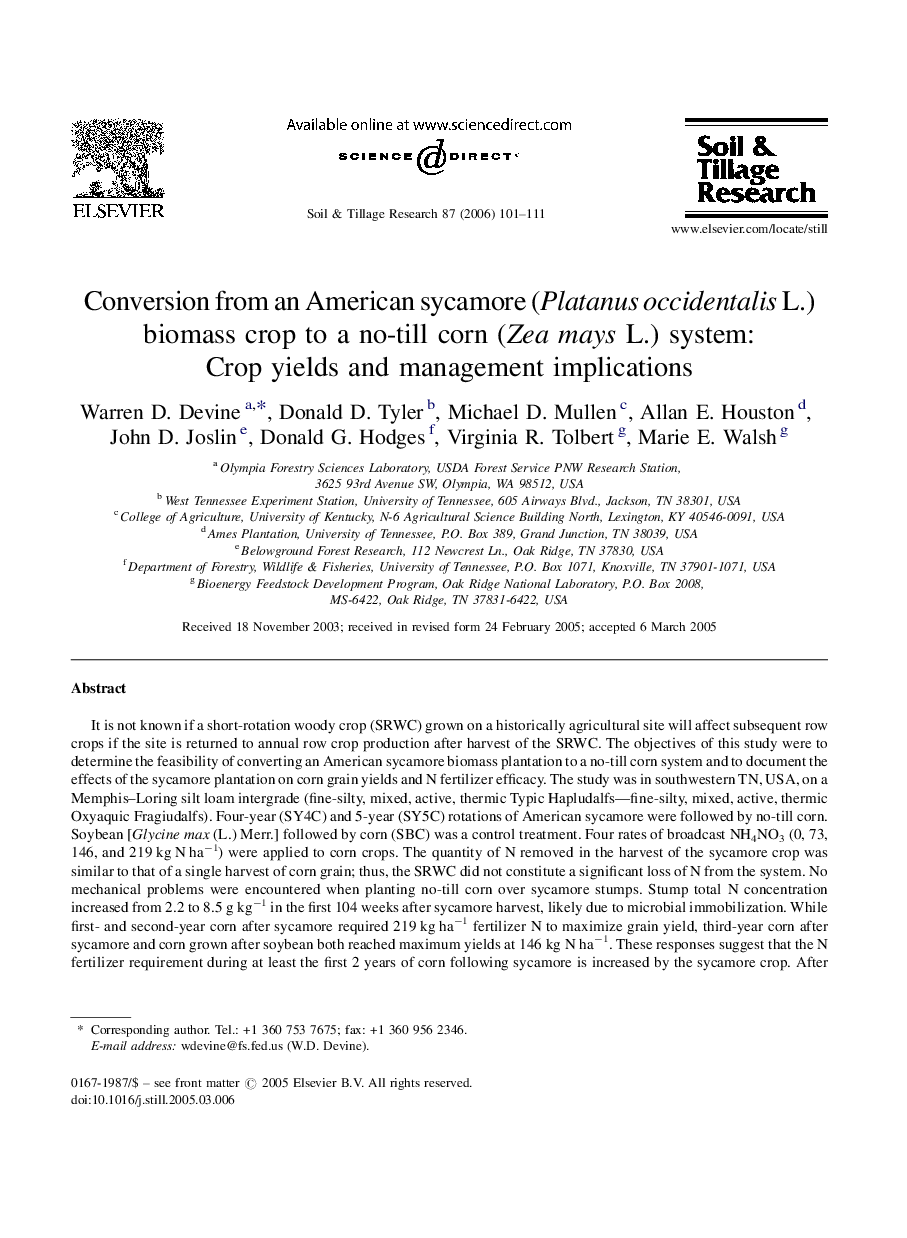| Article ID | Journal | Published Year | Pages | File Type |
|---|---|---|---|---|
| 306877 | Soil and Tillage Research | 2006 | 11 Pages |
It is not known if a short-rotation woody crop (SRWC) grown on a historically agricultural site will affect subsequent row crops if the site is returned to annual row crop production after harvest of the SRWC. The objectives of this study were to determine the feasibility of converting an American sycamore biomass plantation to a no-till corn system and to document the effects of the sycamore plantation on corn grain yields and N fertilizer efficacy. The study was in southwestern TN, USA, on a Memphis–Loring silt loam intergrade (fine-silty, mixed, active, thermic Typic Hapludalfs—fine-silty, mixed, active, thermic Oxyaquic Fragiudalfs). Four-year (SY4C) and 5-year (SY5C) rotations of American sycamore were followed by no-till corn. Soybean [Glycine max (L.) Merr.] followed by corn (SBC) was a control treatment. Four rates of broadcast NH4NO3 (0, 73, 146, and 219 kg N ha−1) were applied to corn crops. The quantity of N removed in the harvest of the sycamore crop was similar to that of a single harvest of corn grain; thus, the SRWC did not constitute a significant loss of N from the system. No mechanical problems were encountered when planting no-till corn over sycamore stumps. Stump total N concentration increased from 2.2 to 8.5 g kg−1 in the first 104 weeks after sycamore harvest, likely due to microbial immobilization. While first- and second-year corn after sycamore required 219 kg ha−1 fertilizer N to maximize grain yield, third-year corn after sycamore and corn grown after soybean both reached maximum yields at 146 kg N ha−1. These responses suggest that the N fertilizer requirement during at least the first 2 years of corn following sycamore is increased by the sycamore crop. After converting from a SRWC to a row crop, plant-available N should be carefully monitored due to potential losses from N immobilization in woody residues.
